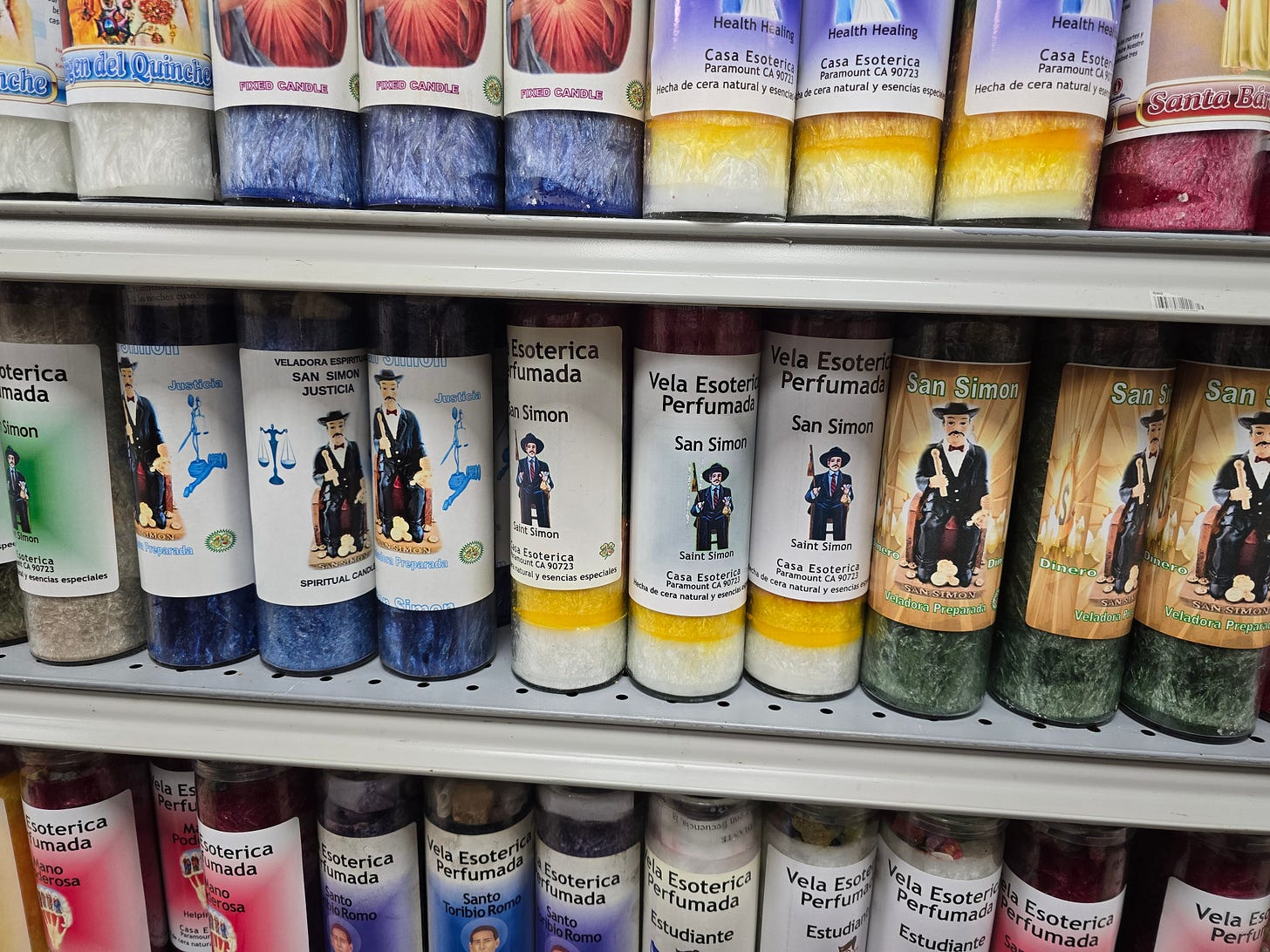From Botanicas to the Smithsonian: Growing Up in the Folk Magic of Brujeria
Childhood in America's Magical Melting Pot, Washington D.C.

Growing up in Washington, D.C., meant more than just dodging tourists and navigating the Metro like a seasoned subway rodent. For me, it was a city of hidden sanctuaries, where the mystical and the mundane coexisted in the most unexpected ways. My family, Guatemalan immigrants with deep indigenous Maya roots, carried with them the magic of the old country—a magic that found its way into the fabric of my childhood in ways I did not fully appreciate until much later.
A Street-Level Magical Education
I did not grow up browsing metaphysical shops with neatly labeled crystals and sage bundles tied up like artisanal bouquets. No, my first taste of the occult came from the botanicas scattered across the D.C.-Maryland-Virginia (DMV) area. These were not your polished New Age boutiques—they were dense, cluttered treasure troves of spiritual power, packed with walls of statues, herbs, candles in every color, and an ever-present haze of burning copal or Agua Florida.
Most of these shops were run by Santeros or veteran elders of Afro-Caribbean traditions, but the clientele? A beautiful, chaotic mix of Mexicans, Central Americans, and anyone else drawn to the hum of ancestral magic. These spaces were not just stores—they were community hubs, places where people came not just to buy but to learn, share, and whisper about the unseen forces shaping their lives.
A purchase at a botanica could possibly come with an invitation to a misa, a velación, or some other gathering where spirits would be called, songs would be sung, and at some point, someone (or several someones) would be possessed. These were not stiff, solemn affairs—Afro-Latino spiritual gatherings are full of life. Picture pounding drums, rhythmic chants, a steady flow of rum, and bodies moving in trance as spirits arrived to claim their seats at the party. Here, you did not just learn about magic—you felt it.
The botanicas and the spiritual parties were my first classrooms. They were places of cross-training, where traditions were not hoarded but shared. Brujos from Salvador swapped ideas with curanderos from Mexico, who in turn debated rituals with Santeros from the islands. It was a fusion of indigenous, African, and even European magical currents, creating a kind of mystical melting pot that made Washington, D.C., an unexpected esoteric hotspot.
Being raised in this cultural vortex meant my education in magic was less about structured initiations (though I received three in Santeria, despite never making Ocha) and more about absorbing living traditions through experience. I do not claim to be an authority in Santeria or any other practice I have trained in, but I do carry the weight of meaningful experiences—ones that shaped how I understand magic, spirituality, and the unseen forces that guide us.
I Remember my First Dance…
I was not suave. My hands were to myself and she was about 3 feet away and 3 years beyond me. At the songs conclusion, my hands were shaking, my face kissed and cheeks pinched by half-a-dozen abuelas on my way back to the folded chairs beside the dancefloor. If I and my dance partner were a display of separation, the next song featured a pair that were anything but.
There was nothing overtly sexual in their minimal attire: indeed it was as formal as the leather and fur they had shrugged off at the door. Nor was there any trace of discomfort amongst the audience: they watched the pair with the same grave compassionate looks as they had watched me.
He and she had gone to opposite sides of the raised platform, halted there a beat, then turned and begun to sway toward eachother. They slowly advanced until they were nose to nose, lip to lip. It had crossed my juvenial mind that maybe some erotic display was in the works, and in a way that bewildered MY every definition of sensation. My eyes could have fooled me but to this day the record of my bodily lenses testifies the pair pressing into each other, their faces fading, torsos coagulating, their rhythm-tuned limbs too, until as if they were one body, the head almost a featureless sphere powered by the romantic interlocking of tongues.
The mirage was inpenetrable. But there was more on the horizon, for the pair were still bumping and grinding, their faces appearing now pressed behind eachother’s necks as though their bodies were soft as flan. And still, they advanced in a siamese waltz of the hips, tissue, nerve, bone and soul.
D.C.: The Esoteric Capital No One Talks About
With the Smithsonian just a Metro ride away, I had access to artifacts and knowledge that most young practitioners could only dream of. While other kids took field trips to see dinosaur bones, I marveled at Mayan codices and African ritual masks, unknowingly building the foundation for my future work in blending verifiable history with lived mystical practice.
In many ways, Washington, D.C., gave me the best of both worlds: the raw, untamed magic of my ancestors and the scholarly resources to contextualize it. It is a city where the spirits of revolution, resistance, and reinvention still linger, and its esoteric underground—often overshadowed by political grandeur—is alive and well.
So when people ask me where I am from, I say it with pride. Not just because D.C. is the nation’s capital, but because it’s where I first learned that magic is not just something you practice—it is something you live.
*photos/video taken at Botanica Dayana’s 2065 University Blvd E, Hyattsville, MD 20783



